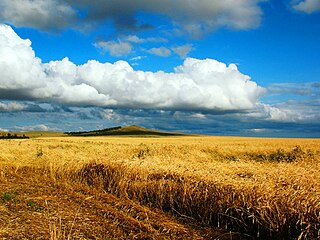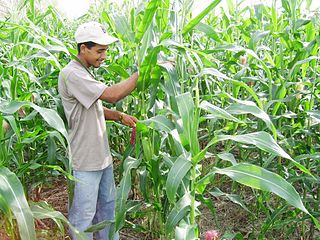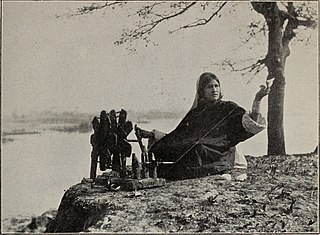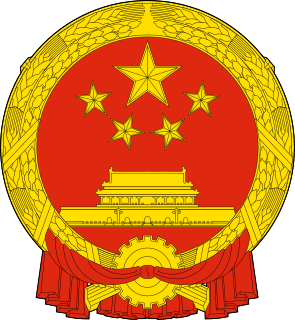Function of CCA
The CCA is made up of players from the cotton sector, cotton farm groups, those in the cotton production sector, buyers, sub-contractors, vendors, exporters, warehousing companies, the clothing industry and cotton research organizations.
Clothing industry or garment industry summarizes the types of trade and industry along the production and life chain of clothing and garments, starting with the textile industry via fashion industry to fashion retailers up to trade with second-hand clothes and textile recycling. The producing sectors build upon a wealth of clothing technology some of which, like the loom, the cotton gin, and the sewing machine heralded industrialization not only of the previous textile manufacturing practices.
Members of the association are either organizations or businesses working in the cotton sector that wish to participate in a Chinese consultation structure. Set up in September 2003, the association has since actively developed numerous service and conciliation activities, set up a code of ethics and internal regulations as well as professional protection services within the sector.
The association has become one of the major partners and an important relay between official organizations, governmental structures and agricultural and industrial players in the Chinese cotton sector.
It is a major player in the steady and stable development of the Chinese cotton sector. Over the last four years, it has established numerous working relationships and many regular exchanges with international organizations in the cotton trade and industry in the main producer and cotton-buying countries worldwide.
Industry
- China is the largest cotton producing country in the world (35.8 million bales, 2007)
- China has about 24 million cotton farmers
- 7,500 textile companies which produce an estimated RMB 488 billion of cotton cloth
- Chinese cotton production requires an average 3,000 to 5,000 cubic metres of water per hectare
- 30–40% of all pesticides applied in China are applied to cotton, making it the most heavily treated agricultural crop.
- Xinjiang is the country's top cotton growing area.

Xinjiang, officially the Xinjiang Uygur Autonomous Region (XUAR), is a provincial-level autonomous region of China in the northwest of the country. It is the largest Chinese administrative division and the eighth largest country subdivision in the world, spanning over 1.6 million km2. Xinjiang contains the disputed territory of Aksai Chin, which is administered by China and claimed by India. Xinjiang borders the countries of Mongolia, Russia, Kazakhstan, Kyrgyzstan, Tajikistan, Afghanistan, Pakistan (Gilgit-Baltistan), and India. The rugged Karakoram, Kunlun, and Tian Shan mountain ranges occupy much of Xinjiang's borders, as well as its western and southern regions. Xinjiang also borders Tibet Autonomous Region and the provinces of Gansu and Qinghai. The most well-known route of the historical Silk Road ran through the territory from the east to its northwestern border. In recent decades, abundant oil and mineral reserves have been found in Xinjiang, and it is currently China's largest natural gas-producing region.
Chinese cotton sector
Chinese cotton production in 2006 related to a planted area of nearly five and a half million hectares (5,410,000 hectares), i.e. eighty one million ‘mous’ (a ‘mou’ is the traditional area unit used in rural China, which is about a fifteenth of a hectare ) (81,130,000 ‘mous’). According to the official Chinese Statistics Office figures, production in 2006 was 6,730,000 tonnes. Of this, a third of the production came from the Xinjiang province, 2,180,000 tonnes. Based on these production figures, it is estimated that it was needed to import 4,300,000 tonnes of cotton in order to meet the demand, but in fact between September 2006 and August 2007 (which is the annual cotton season in China) the country only had to import 2,280,000 tonnes of cotton, i.e. 47% less than predicted. Two million tonnes less than predicted. Actual production in Xinjiang was over 3,200,000 tonnes of cotton. Production in China is in the region of 7,700,000 tonnes.they take the cotton to a machine that will ship it and then makes it into the thread they need to make cotton.

The National Bureau of Statistics or NBS is an agency directly under the State Council of the People's Republic of China charged with the collection and publication of statistics related to the economy, population and society of the People's Republic of China at the national and local levels.
Mill production is increasing quite rapidly. According to the Chinese Statistics Office, between September 2006 and August 2007 China produced 19,030,000 tonnes of yarn. It is up 18.8%, but is however an increase that is 8 points down on the same period in the previous year.
According to a study undertaken by the Chinese Cotton Association, in 2007 in China the planted area of cotton was 82,600,000 ‘mous’ (around 5 and a half million hectares), a slight increase on the previous year. Production forecasts anticipate production remaining stable against the previous year, with perhaps a slight increase to reach around 7,700,000 tonnes once again.
Demand in China is constantly increasing. Specialists estimate that textile production for 2007 will continue to grow. It is thought that the production of cotton thread will increase 10% to reach around 21 million tonnes. With a cotton requirement of 12 million tonnes, China needs to import around 4 million tonnes of cotton.

The Dominican Republic has the ninth largest economy
in Latin America, and is the largest in the Caribbean and Central America region. It is an
upper middle-income developing country primarily dependent on mining, agriculture, trade, and services.
Although the service sector has recently overtaken agriculture as the leading employer of Dominicans, agriculture remains the most important sector in terms of domestic consumption and is in second place in terms of export earnings. Tourism accounts for more than $1 billion in annual earnings. free-trade zone earnings and tourism are the fastest-growing export sectors. According to a 1999 International Monetary Fund report, remittances from Dominican Americans, are estimated to be about $1.5 billion per year. Most of these funds are used to cover basic household needs such as shelter, food, clothing, health care and education. Secondarily, remittances have financed small businesses and other productive activities.

Turkmenistan is one of the world's fastest-growing economies. It is largely a desert country with intensive agriculture in irrigated areas, and huge gas and oil resources. In terms of natural gas reserves, it is ranked 7th in the world. Turkmenistan’s two largest agricultural crops are cotton, most of which is produced for export, and wheat, which is domestically consumed. Turkmenistan is among the top ten producers of cotton in the world.
From 1998 to 2005, Turkmenistan suffered from a lack of adequate export routes for natural gas and from obligations on extensive short-term external debt. At the same time, however, total exports rose by an average of roughly 15% per year from 2003 to 2008, largely because of higher international oil and gas prices. As in the Soviet era, central planning and state control pervade the system, and the Niyazov government consistently rejected market reform programs. The state subsidized a wide variety of commodities and services from the early 1990s to 2019. Since his election in 2007, President Gurbanguly Berdimuhamedow has unified the country's dual currency exchange rate, ordered the redenomination of the manat, reduced state subsidies for gasoline, and initiated development of a special tourism zone (Awaza) on the Caspian Sea. Since 2009, Turkmenistan has maintained the fixed exchange rate. As of 2018, 1 United States dollar is equivalent to 3.50 Turkmenistan manat.

Agriculture in Thailand is highly competitive, diversified and specialised and its exports are very successful internationally. Rice is the country's most important crop, with some 60 percent of Thailand's 13 million farmers growing it on fully half of Thailand's cultivated land. Thailand is a major exporter in the world rice market. Rice exports in 2014 amounted to 1.3 percent of GDP. Agricultural production as a whole accounts for an estimated 9-10.5 percent of Thai GDP. Forty percent of the population work in agriculture-related jobs. The farmland they work was valued at US$2,945 per rai in 2013. Most Thai farmers own fewer than eight hectares of land.

Agriculture in Cuba has played an important part in the economy for several hundred years. Today, it contributes less than 10% to the gross domestic product (GDP), but it employs about 20% of the working population. About 30% of the country's land is used for crop cultivation.
The history of Agriculture in India dates back to Indus Valley Civilization Era and even before that in some parts of Southern India. India ranks second worldwide in farm outputs. As per 2018, Agriculture employed 50% of the Indian work force and contributed 17-18% to country's GDP.

Roughly one-third of Iran's total surface area is suited for farmland, but because of poor soil and lack of adequate water distribution in many areas, most of it is not under cultivation.
Only 12% of the total land area is under cultivation but less than one-third of the cultivated area is irrigated; the rest is devoted to dryland farming. Some 92 percent of agro products depend on water. The western and northwestern portions of the country have the most fertile soils. Iran's food security index stands at around 96 percent.

Agriculture in Kazakhstan remains a small scale sector of Kazakhstan's economy. Agriculture's contribution to the GDP is under 10% - it was recorded as 6.7%, and as occupying only 20% of labor. At the same time, more than 70% of its land is occupied in crops and animal husbandry. Compared to North America, a relatively small percentage of land is used for crops, with the percentage being higher in the north of the country. 70% of the agricultural land is permanent pastureland.

Senegal's economy is mostly driven by agriculture, fisheries, mining, construction and tourism. Most of Senegal lies within the drought-prone Sahel region, with irregular rainfall and generally poor soils. With only about 5 percent of the land irrigated, Senegal continues to rely on rain-fed agriculture, which occupies about 75 percent of the workforce. Despite a relatively wide variety of agricultural production, the majority of farmers produce for subsistence needs. Production is subject to drought and threats of pests such as locusts, birds, fruit flies, and white flies. Millet, rice, corn, and sorghum are the primary food crops grown in Senegal.

Agriculture is a vital industry in China, employing over 300 million farmers. China ranks first in worldwide farm output, primarily producing rice, wheat, potatoes, tomato, sorghum, peanuts, tea, millet, barley, cotton, oilseed and soybeans.

In 4,000 years, China has been a nation of farmers. By the time the People's Republic of China was established in 1949, virtually all arable land was under cultivation; irrigation and drainage systems constructed centuries earlier and intensive farming practices already produced relatively high yields. But little prime virgin land was available to support population growth and economic development. However, after a decline in production as a result of the Great Leap Forward (1958–60), agricultural reforms implemented in the 1980s increased yields and promised even greater future production from existing cultivated land.

Agriculture in the Philippines employs 27.7% of the Filipino workforce as of 2017, according to the World Bank

Agriculture in Ethiopia is the foundation of the country's economy, accounting for half of gross domestic product (GDP), 83.9% of exports, and 80% of total employment.
Uganda's favorable soil conditions and climate have contributed to the country's agricultural success. Most areas of Uganda have usually received plenty of rain. In some years, small areas of the southeast and southwest have averaged more than 150 millimeters per month. In the north, there is often a short dry season in December and January. Temperatures vary only a few degrees above or below 20 °C but are moderated by differences in altitude.

The role of agriculture in the Bolivian economy in the late 1980s expanded as the collapse of the tin industry forced the country to diversify its productive and export base. Agricultural production as a share of GDP was approximately 23 percent in 1987, compared with 30 percent in 1960 and a low of just under 17 percent in 1979. The recession of the 1980s, along with unfavorable weather conditions, particularly droughts and floods, hampered output. Agriculture employed about 46 percent of the country's labor force in 1987. Most production, with the exception of coca, focused on the domestic market and self-sufficiency in food. Agricultural exports accounted for only about 15 percent of total exports in the late 1980s, depending on weather conditions and commodity prices for agricultural goods, hydrocarbons, and minerals.

Throughout its history, agriculture in Paraguay has been the mainstay of the economy. This trend has continued today and in the late 1980s the agricultural sector generally accounted for 48 percent of the nation's employment, 23 percent of GDP, and 98 percent of export earnings. The sector comprised a strong food and cash crop base, a large livestock subsector including cattle ranching and beef production, and a vibrant timber industry.

Agriculture in Panama is an important sector of the Panamanian economy. Major agricultural products include bananas, cocoa beans, coffee, coconuts, timber, beef, chicken, shrimp, corn, potatoes, rice, soybeans, and sugar cane.
Despite six years of crisis in Syria, agriculture remains a key part of the economy. The sector still accounts for an estimated 26 percent of gross domestic product (GDP) and represents a critical safety net for the 6.7 million Syrians – including those internally displaced - who still remain in rural areas. However, agriculture and the livelihoods that depend on it have suffered massive loss. Today, food production is at a record low and around half the population remaining in Syria are unable to meet their daily food needs.

China, with one-fifth of the world's population, accounts for two-thirds of the world's reported aquaculture production.
The textile industry in India traditionally, after agriculture, is the only industry that has generated huge employment for both skilled and unskilled labour in textiles. The textile industry continues to be the second-largest employment generating sector in India. It offers direct employment to over 35 million in the country. The share of textiles in total exports was 11.04% during April–July 2010, as per the Ministry of Textiles. During 2009–2010, the Indian textile industry was pegged at US$55 billion, 64% of which services domestic demand. In 2010, there were 2,500 textile weaving factories and 4,135 textile finishing factories in all of India. According to AT Kearney’s ‘Retail Apparel Index’, India was ranked as the fourth most promising market for apparel retailers in 2009.

Cotton production in Pakistan is integral to the economic development of the country. The nation is largely dependent on the cotton industry and its related textile sector, and the crop has been given a principal status in the country. Cotton is grown as an industrial crop in 15% of the nation's land during the monsoon months of May to August, known as the kharif period, and is grown at a smaller scale between February and April. Record production of cotton was reported at 15 million bales of 470 pounds (210 kg) each in the form of phutti during 2014–15, which was an 11% rise compared to the previous season (2013–14). Production-wise, as of 2012–13, Pakistan occupied the fourth position among the cotton growers of the world, the first three being China, India and the United States, in that order. In respect of exports of raw cotton, Pakistan holds third position, and is the fourth in consumption. It is the largest exporter of cotton yarn.




















